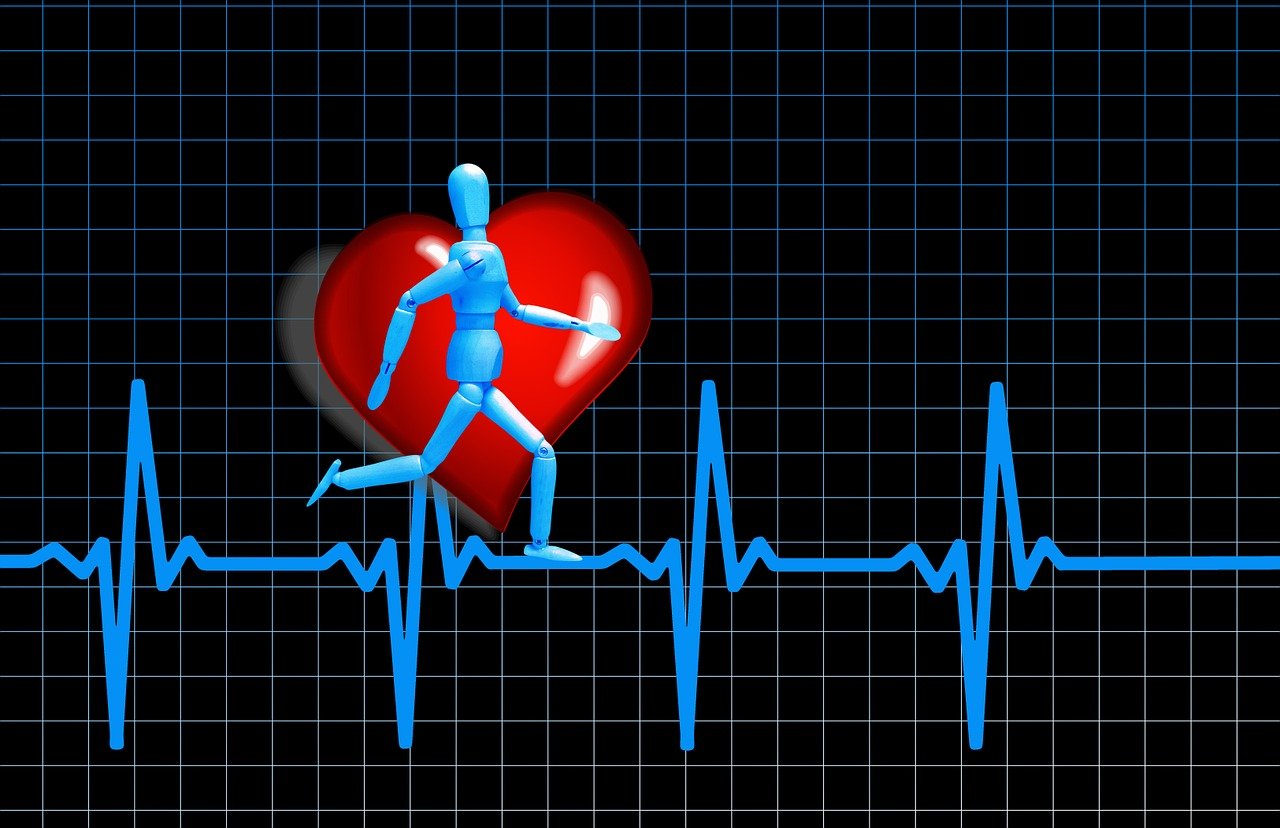Heart Rate Variability (HRV) has become a important metric in personal health monitoring, especially with the advent of smart wearables. This article delves into the significance of HRV, its measurement, and its applications in daily life.
Understanding HRV
HRV refers to the variation in time intervals between consecutive heartbeats. Unlike a constant heart rate, a higher HRV indicates a robust and adaptable autonomic nervous system, reflecting better stress resilience and overall cardiovascular health.
Measurement Techniques
Modern smartwatches and wearables employ photoplethysmography (PPG) sensors to detect blood volume changes, allowing for HRV assessment. Devices like the Oura Ring and Whoop Band provide continuous HRV tracking, offering insights into the body’s recovery and readiness states.
Rising Importance of HRV
HRV has gained prominence as it offers a window into the body’s autonomic nervous system balance. Monitoring HRV can help in identifying stress levels, predicting potential health issues, and tailoring lifestyle choices to enhance well-being.
The science behind HRV measurements
The scientific foundation of HRV measurements lies in the complex interplay between various physiological systems, primarily the cardiovascular and nervous systems. Understanding the underlying mechanisms and measurement techniques is essential for accurately interpreting HRV data and its implications for health and well-being.
Key scientific principles behind HRV measurements include:
- Autonomic nervous system influence:
- Sympathetic activity: Increases heart rate and decreases HRV
- Parasympathetic activity: Decreases heart rate and increases HRV
- Respiratory sinus arrhythmia (RSA):
- Natural variation in heart rate that occurs during the breathing cycle
- Contributes significantly to short-term HRV measurements
- Baroreceptor reflex:
- Rapid blood pressure regulation mechanism
- Influences beat-to-beat variations in heart rate
- Circadian rhythms:
- 24-hour biological cycles that affect HRV patterns
- Important consideration in long-term HRV assessments
The scientific validity of HRV measurements is supported by extensive research across various fields, including cardiology, neuroscience, and psychophysiology. These studies have established HRV as a reliable indicator of autonomic function and a valuable tool for assessing overall health and resilience.
HRV as an indicator of overall health
HRV serves as a indicator of overall health, offering valuable insights into the body’s physiological state and adaptability. This metric provides a window into the complex interplay between various bodily systems, making it an essential tool for health assessment.
HRV reflects the body’s ability to adapt to changing circumstances, both internal and external. A higher HRV generally indicates better overall health and resilience, while a lower HRV may suggest compromised health or increased stress levels. This relationship stems from the intricate connection between HRV and the body’s regulatory mechanisms.
By monitoring HRV, individuals and healthcare professionals can gain valuable insights into overall health status and make informed decisions about lifestyle modifications or interventions when necessary.
HRV scores are typically presented on a scale, often from 0 to 100, with higher scores generally indicating better autonomic balance and resilience. However, it’s crucial to understand that HRV is highly individualised, and what’s considered a “good” score can vary based on factors such as:
- Age: HRV tends to decrease with age
- Fitness level: Well-trained individuals often have higher HRV
- Gender: Males typically have slightly higher HRV than females
- Health conditions: Certain health issues can impact HRV
Here’s a general guide to interpreting HRV scores:
| Score Range | Interpretation |
| 80-100 | Excellent |
| 60-79 | Good |
| 40-59 | Average |
| 20-39 | Below Average |
| 0-19 | Poor |
Remember that these ranges are approximate and should be considered in the context of your individual baseline and trends over time.
Frequency of measurements for optimal insights
To gain meaningful insights from HRV measurements, consistency and proper timing are key. Here are some guidelines for optimal HRV monitoring:
- Daily measurements: For the most comprehensive understanding of your HRV patterns, aim for daily measurements. This allows you to track trends over time and identify factors that influence your HRV.
- Consistent timing: Take measurements at the same time each day, preferably in the morning shortly after waking. This minimizes the influence of daily activities and provides a more stable baseline for comparison.
- Resting state: Measure HRV when you’re in a relaxed, resting state. Avoid taking measurements immediately after exercise, meals, or stressful events.
- Longer-term trends: Focus on weekly or monthly averages rather than day-to-day fluctuations. HRV can vary significantly from one day to the next, so longer-term trends provide more reliable insights into your overall health and resilience.
- Context tracking: Keep a log of factors that might influence your HRV, such as sleep quality, stress levels, diet, and exercise. This can help you identify patterns and make informed lifestyle adjustments.
- Periodic reassessment: If you’re using HRV to guide training or stress management, reassess your baseline every 4-6 weeks to account for changes in fitness or overall health.
- Seasonal variations: Be aware that HRV can fluctuate with seasonal changes. Some people may experience lower HRV during winter months, for example.
By following these guidelines and maintaining consistent measurement practices, you can use the power of HRV monitoring to gain valuable insights into your body’s resilience and overall health. Remember that HRV is just one piece of the health puzzle, and it should be considered alongside other metrics and how you feel overall.
Improving Your HRV for Better Resilience
Targeted breathing exercises
Breathing exercises are a powerful tool for improving Heart Rate Variability (HRV) and enhancing overall resilience. These exercises directly influence the autonomic nervous system, which plays a crucial role in regulating HRV. By practicing specific breathing techniques, individuals can effectively modulate their HRV and strengthen their body’s ability to adapt to stress.
One of the most effective breathing exercises for improving HRV is resonance frequency breathing. This technique involves breathing at a specific rate that maximizes HRV amplitude. Typically, this occurs at around 6 breaths per minute for most adults. Here’s a simple guide to practice resonance frequency breathing:
- Find a comfortable seated position
- Inhale slowly for 4 seconds
- Exhale slowly for 6 seconds
- Repeat this cycle for 5-10 minutes
Another beneficial breathing exercise is diaphragmatic breathing, also known as belly breathing. This technique helps activate the parasympathetic nervous system, promoting relaxation and potentially improving HRV. To practice diaphragmatic breathing:
- Lie on your back or sit comfortably
- Place one hand on your chest and the other on your abdomen
- Breathe in slowly through your nose, feeling your abdomen rise
- Exhale slowly through pursed lips, feeling your abdomen fall
- Repeat for 5-10 minutes.
Incorporating these breathing exercises into your daily routine can significantly impact your HRV and overall resilience. Aim to practice for at least 10-15 minutes per day, gradually increasing the duration as you become more comfortable with the techniques.
Regular physical activity and its impact
Physical activity plays a crucial role in improving HRV and enhancing overall resilience. Regular exercise has been shown to have a positive impact on the autonomic nervous system, leading to improved HRV and better stress management capabilities.
Different types of exercise can affect HRV in various ways:
- Aerobic exercise: Activities like running, cycling, or swimming can improve HRV by strengthening the cardiovascular system and enhancing autonomic balance.
- High-Intensity Interval Training (HIIT): This form of exercise has been shown to have a significant positive impact on HRV, potentially due to its ability to challenge and adapt the autonomic nervous system.
- Strength training: Resistance exercises can improve HRV by enhancing overall physical fitness and promoting better stress resilience.
- Yoga and Tai Chi: These mind-body practices combine physical movement with breathing techniques, potentially offering dual benefits for HRV improvement.
To optimise the benefits of physical activity on HRV:
- Aim for at least 150 minutes of moderate-intensity aerobic activity or 75 minutes of vigorous-intensity aerobic activity per week
- Include 2-3 strength training sessions per week
- Incorporate HIIT workouts 1-2 times per week
- Practice yoga or Tai Chi 2-3 times per week for additional mind-body benefits
It’s important to note that while exercise generally improves HRV, excessive or intense training without proper recovery can temporarily decrease HRV. This underscores the importance of balanced training and adequate rest periods.
Stress management techniques
Effective stress management is crucial for improving HRV and building resilience. Chronic stress can significantly impact HRV, leading to decreased variability and potentially compromising overall health. Implementing various stress management techniques can help mitigate these effects and promote better HRV.
Some effective stress management techniques include:
- Mindfulness meditation: Regular practice of mindfulness can help reduce stress and improve HRV by promoting a state of calm awareness.
- Progressive muscle relaxation: This technique involves systematically tensing and relaxing different muscle groups, helping to reduce physical tension and mental stress.
- Biofeedback training: Using HRV biofeedback devices can help individuals learn to consciously influence their HRV, providing a powerful tool for stress management.
- Time management and prioritisation : Organising tasks and managing time effectively can reduce stress levels and potentially improve HRV.
- Social support: Maintaining strong social connections and seeking support when needed can help buffer against stress and improve overall resilience.
Incorporating these stress management techniques into your daily routine can improve your HRV and overall resilience. It’s important to experiment with different methods to find what works best for you and to practice consistently for optimal results.
Nutrition strategies for HRV optimisation
Nutrition plays a important role in optimising HRV and enhancing overall resilience. The food we consume can directly impact our autonomic nervous system function and, consequently, our HRV. Implementing specific nutrition strategies can help improve HRV and support better stress management.
Key nutrition strategies for HRV optimisation include:
- Balanced macronutrient intake: Ensure a proper balance of carbohydrates, proteins, and healthy fats to support overall health and HRV.
- Omega-3 fatty acids: Increase consumption of foods rich in omega-3s, such as fatty fish, flaxseeds, and walnuts, which have been shown to positively impact HRV.
- Antioxidant-rich foods: Incorporate a variety of colourful fruits and vegetables to combat oxidative stress and support HRV.
- Magnesium-rich foods: Include foods high in magnesium, such as leafy greens, nuts, and whole grains, as magnesium plays a role in regulating heart rhythm.
- Hydration: Maintain proper hydration levels, as dehydration can negatively impact HRV.
- Limiting caffeine and alcohol: While moderate consumption may not be harmful, excessive intake of caffeine and alcohol can negatively affect HRV.
- Probiotic and prebiotic foods: Support gut health with probiotic-rich foods like yogurt and fermented vegetables, as well as prebiotic foods like garlic and onions, which may indirectly influence HRV through the gut-brain axis.
Remember that individual nutritional needs may vary, and it’s always best to consult with a healthcare professional or registered dietitian for personalised advice.
Sleep hygiene and its effect on HRV
Sleep plays a vital role in regulating HRV and overall health. Poor sleep quality or insufficient sleep duration can negatively impact HRV, while good sleep hygiene can significantly improve it. Implementing effective sleep hygiene practices can enhance HRV and contribute to better stress resilience.
Key sleep hygiene practices for optimising HRV include:
- Consistent sleep schedule: Maintain a regular sleep-wake cycle, even on weekends, to support your body’s natural circadian rhythm.
- Create a sleep-conducive environment: Ensure your bedroom is dark, quiet, and cool to promote better sleep quality.
- Limit screen time before bed: The blue light emitted by electronic devices can interfere with melatonin production. Try to avoid screens for at least an hour before bedtime.
- Establish a relaxing bedtime routine: Engage in calming activities like reading, gentle stretching, or meditation to prepare your body for sleep.
- Avoid stimulants: Limit caffeine and alcohol consumption, especially in the hours leading up to bedtime.
- Regular exercise: While physical activity is beneficial for HRV, avoid intense exercise close to bedtime as it may interfere with sleep.
- Manage stress before bed: Practice stress-reduction techniques like deep breathing or journaling to clear your mind before sleep.
- Optimise your sleep environment: Invest in a comfortable mattress, pillows, and bedding to enhance sleep quality.
Monitoring your HRV upon waking can provide valuable insights into your sleep quality and overall recovery status. Many HRV monitoring devices and apps offer this feature, allowing you to track trends over time and make necessary adjustments to your sleep habits.
By implementing these sleep hygiene practices and prioritising quality sleep, you can improve your HRV and enhance your body’s overall resilience. Remember that consistency is key, and it may take some time to see noticeable improvements in your HRV measurements.
As we’ve explored various strategies for improving HRV and enhancing resilience, it’s clear that a holistic approach encompassing breathing exercises, physical activity, stress management, nutrition, and sleep hygiene can yield significant benefits.

HRV Applications in Various Fields
Sports Performance and Recovery
Heart Rate Variability (HRV) has become an invaluable tool in the world of sports, revolutionising how athletes and coaches approach training, performance optimisation, and recovery. By monitoring HRV, sports professionals can gain insights into an athlete’s physiological state, allowing for more precise and personalised training regimens.
Training Load Optimisation
One of the primary applications of HRV in sports is optimising training loads. By tracking an athlete’s HRV, coaches can:
- Determine when an athlete is ready for high-intensity training
- Identify periods when recovery is necessary to prevent overtraining
- Adjust training schedules based on individual physiological responses
This personalised approach helps prevent injuries, improves performance, and ensures that athletes are training at optimal levels.
Recovery Management
HRV is an excellent indicator of an athlete’s recovery status. Lower HRV often signifies that the body is still under stress and requires more recovery time. By monitoring HRV:
- Coaches can make informed decisions about rest periods
- Athletes can avoid pushing themselves too hard when their bodies aren’t fully recovered
- Teams can implement more effective recovery strategies
Here’s a comparison of how HRV can guide recovery management:
| HRV Status | Interpretation | Recommended Action |
| High HRV | Good recovery, body adapting well | Proceed with planned training |
| Stable HRV | Maintaining equilibrium | Continue current training load |
| Low HRV | Incomplete recovery, potential fatigue | Reduce intensity, focus on recovery |
| Decreasing HRV Trend | Accumulating fatigue, risk of overtraining | Implement rest days, reassess training plan |
Performance Prediction
HRV measurements can also serve as a predictor of athletic performance. Research has shown correlations between HRV patterns and subsequent performance in various sports. This application allows:
- Coaches to fine-tune competition strategies
- Athletes to gauge their readiness for peak performance
- Teams to make informed decisions about player selection and rotation
Workplace Stress Management
The application of HRV in workplace stress management has gained significant importance in recent years. As organisations recognise the impact of stress on productivity and employee well-being, HRV monitoring has emerged as a powerful tool for managing and mitigating workplace stress.
Early Stress Detection
HRV serves as an early warning system for stress, often detecting physiological changes before an individual becomes consciously aware of feeling stressed. In the workplace, this can be used to:
- Identify high-stress periods or tasks
- Implement timely interventions to prevent burnout
- Create more supportive work environments
Stress Resilience Training
By incorporating HRV biofeedback, employees can learn to improve their stress resilience. This training typically involves:
- Monitoring HRV in real-time
- Practicing breathing techniques and mindfulness exercises
- Observing the immediate impact on HRV
- Gradually building stress resilience over time
Organisational Wellness Programs
Companies are increasingly integrating HRV monitoring into their wellness programs. These initiatives often include:
- Regular HRV assessments for employees
- Personalised stress management strategies based on HRV data
- Group workshops on improving HRV and managing stress
- Creating a culture of well-being and stress awareness
Mental Health Monitoring
The relationship between HRV and mental health has opened up new avenues for monitoring and managing various mental health conditions. HRV analysis provides objective data that can complement traditional psychological assessments and interventions.
Anxiety and Depression Screening
Low HRV has been associated with anxiety disorders and depression. By monitoring HRV:
- Mental health professionals can identify potential risk factors
- Individuals can track their mental health status over time
- Early interventions can be implemented before symptoms become severe
PTSD Management
For individuals with Post-Traumatic Stress Disorder (PTSD), HRV monitoring can be particularly beneficial:
- Tracking HRV patterns can help identify triggers and stress responses
- HRV biofeedback can be used as part of PTSD treatment protocols
- Patients can gain a sense of control by observing improvements in their HRV
Stress-Related Disorder Assessment
HRV analysis can assist in the assessment and management of various stress-related disorders:
| Disorder | HRV Pattern | Potential Intervention |
| Generalised Anxiety Disorder | Consistently low HRV | Cognitive-behavioral therapy, HRV biofeedback |
| Panic Disorder | Erratic HRV with sudden drops | Breathing exercises, exposure therapy |
| Chronic Stress | Gradual decline in HRV | Lifestyle changes, stress management techniques |
| Burnout | Persistently low HRV with little variation | Extended rest, professional counselling |
Predictive Health Care
The potential of HRV in predictive health care is vast and continuously expanding. As a non-invasive measure of autonomic nervous system function, HRV offers insights into overall health status and can predict various health outcomes.
Cardiovascular Risk Assessment
HRV has shown promise in predicting cardiovascular events:
- Low HRV is associated with increased risk of heart disease
- Changes in HRV patterns can precede cardiac events
- Regular HRV monitoring can guide preventive interventions
Diabetes Management
For individuals with diabetes, HRV monitoring can:
- Help detect early signs of autonomic neuropathy
- Guide medication adjustments
- Predict hypoglycemic events
Sleep Disorder Diagnosis
HRV analysis during sleep can aid in the diagnosis and management of sleep disorders:
- Identifying sleep apnea episodes
- Assessing sleep quality
- Guiding sleep hygiene improvements
Chronic Disease Progression
HRV trends can provide valuable information about the progression of various chronic diseases:
- Hypertension: Changes in HRV can indicate blood pressure fluctuations
- Chronic pain conditions: HRV patterns may reflect pain intensity and treatment efficacy
- Autoimmune disorders: HRV can offer insights into inflammation levels and disease activity
Conclusion
Using the power of HRV can lead to enhanced resilience and improved quality of life. By actively working to improve HRV through lifestyle modifications, stress management techniques, and regular monitoring, individuals can take proactive steps towards better health outcomes. As research continues to unveil the potential of HRV, its role in personalised health management and various professional domains is likely to expand, making it an invaluable tool for understanding and optimising human performance and well-being.



